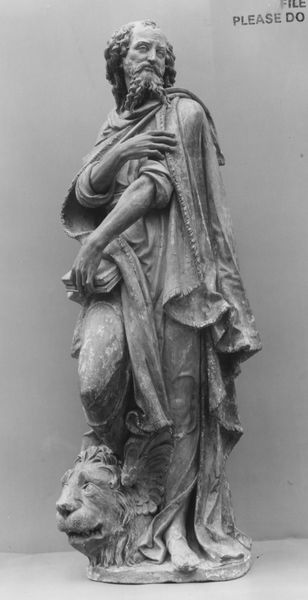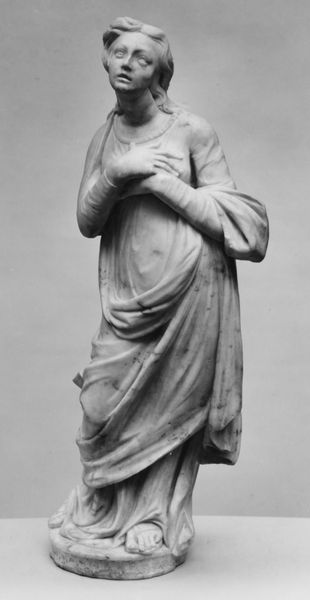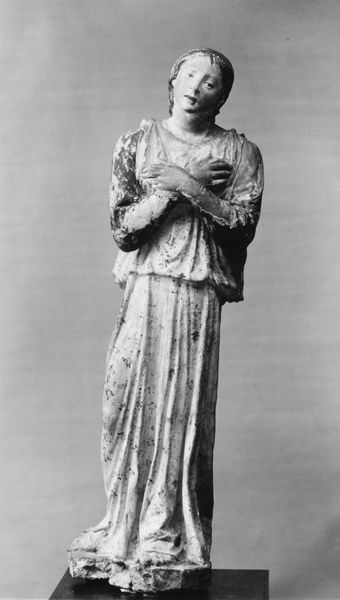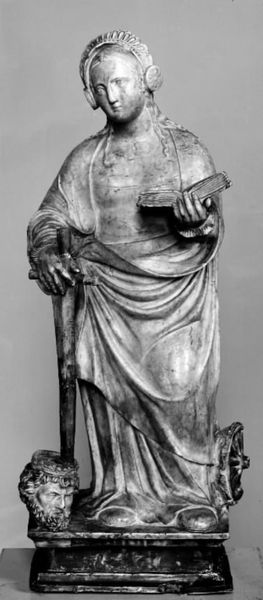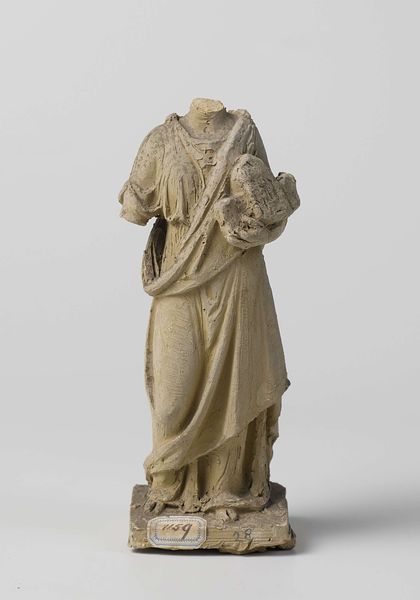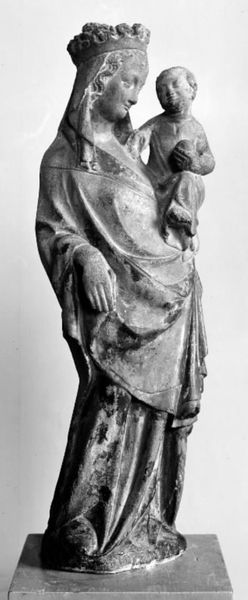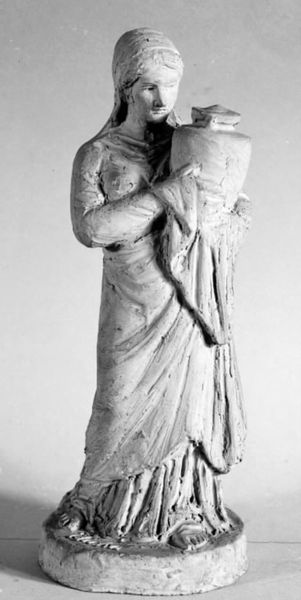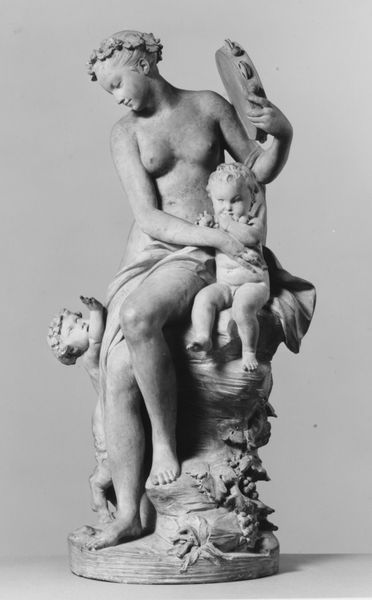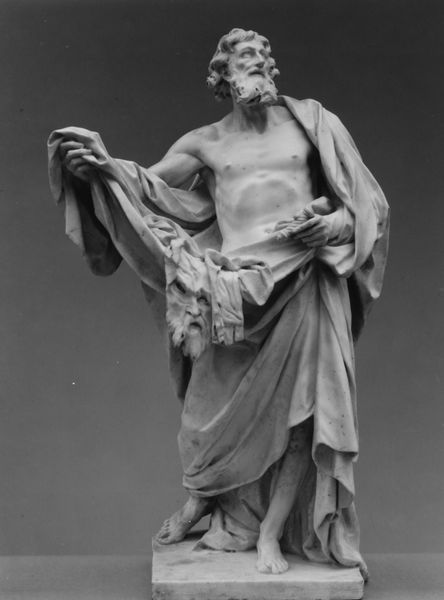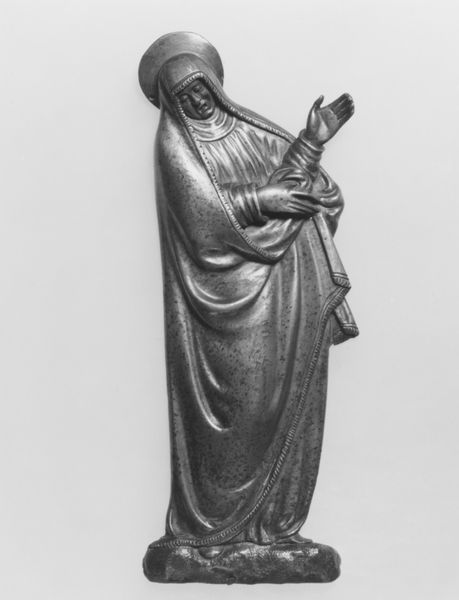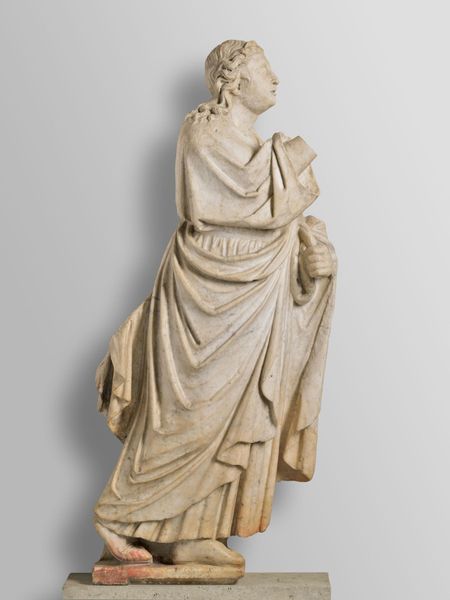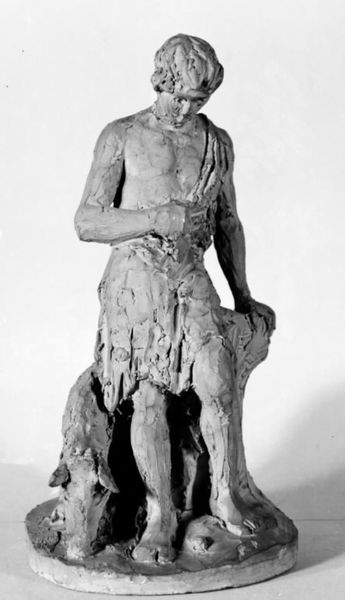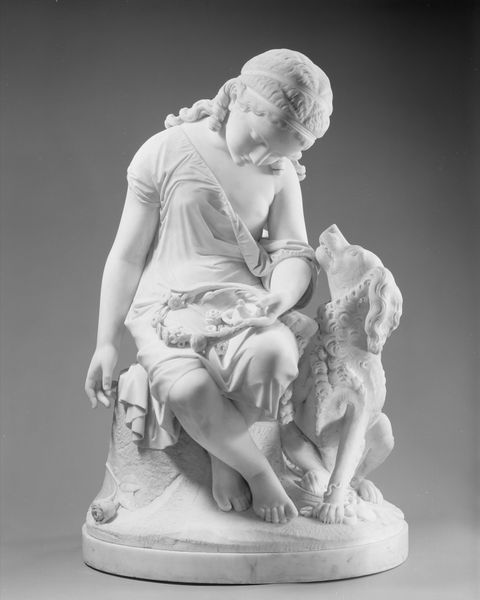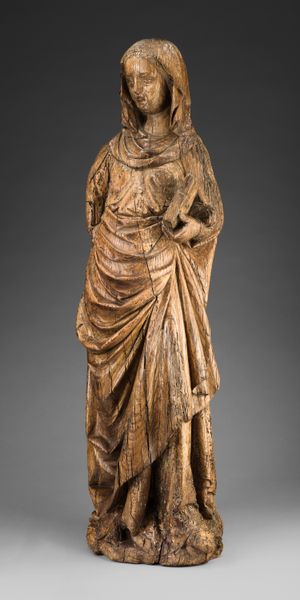
sculpture
#
allegory
#
baroque
#
figuration
#
sculpture
#
black and white
#
decorative-art
#
nude
Dimensions: Height: 86 in. (218.4 cm)
Copyright: Public Domain
Curator: This sculpture presents us with Michel Anguier’s “Leda and the Swan,” a marble artwork created in 1654. It currently resides here at the Metropolitan Museum of Art. What are your immediate impressions? Editor: Serene, almost melancholic. Despite the loaded subject matter, there’s a remarkable sense of calm emanating from Leda’s expression. The way she averts her gaze avoids the more carnal interpretations we often see of this myth. Curator: Precisely. Anguier’s interpretation is fascinating within its historical context. This piece was created during a period when French art began solidifying neoclassical ideals under the influence of the Royal Academy. The mythological subject matter and figuration connect to traditions of representing power and morality. Editor: The swan itself, often a symbol of purity or grace, takes on a dual role here, doesn't it? Its association with Zeus lends a psychological layer to the work. Leda’s hand rests upon its neck in a gesture of what… dominance? Or perhaps resignation? I find that so many classical sculptors really just liked swans and excuses for female nudity, especially for the male gaze. Curator: It's true that Leda is commonly employed to display nudity in fine art. It also functions as an allegory about power dynamics that are central to social and political discourses during this time period, and the academy had requirements for how it was represented. One also cannot help but note that representations of women were dominated by male artists! Editor: The gaze definitely holds power here. Note that Leda looks away, as if attempting to avoid acknowledging what is happening. But even in that averted gaze, the scene takes a quieter approach in showing Zeus, known to take the forms of beasts for pleasure, is ultimately still using his power and not truly prioritizing pleasure as a goal in his conquest. Curator: The sculpture’s creation coincided with a surge in mythological works commissioned by wealthy patrons and displayed in gardens and private collections. These pieces underscored one's classical education and refined tastes. Editor: So, even then the patron's own identity became an indelible feature of their artwork and commission? A potent signal, even beyond artistic appeal. A very subtle reminder of power. Curator: Precisely, reflecting not only personal taste but a societal standing within highly prescribed roles. Editor: Seeing it in this new light clarifies much about its enduring impact—a testament to how art continues to reflect culture across centuries. Curator: Indeed, an artwork like "Leda and the Swan" offers invaluable insights into how narratives shape societies and their art historical production and context.
Comments
No comments
Be the first to comment and join the conversation on the ultimate creative platform.
